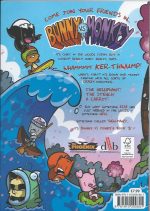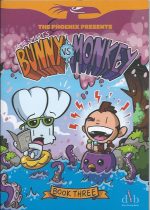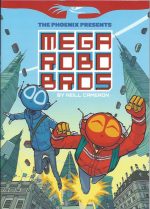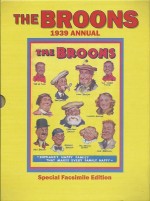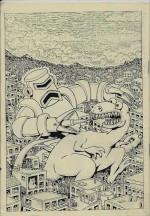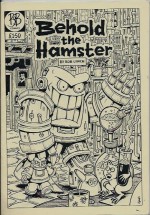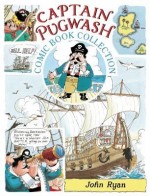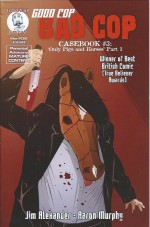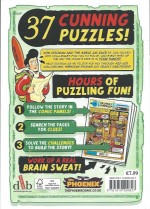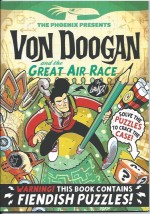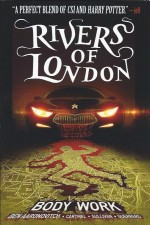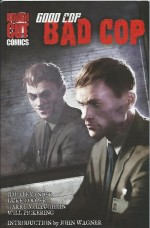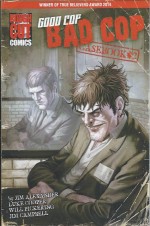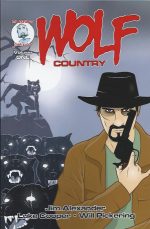
Jim Alexander, Luke Cooper, Will Pickering & various (Planet Jimbot)
No ISBN:
Jim Alexander has been around and done a lot. His other comic stories have been published by Marvel, DC, 2000AD and so many more bastions of graphic narrative success and distinction. He writes with sharp sophistication, an inherent understanding that comics are primarily pictorial and the certain knowledge that the majority of his audience are not morons.
His scripts always have a great sensitivity to place and a strong sense of directed motion, with sparse, spartan self-control that lets his smartly seditious ideas percolate. (Despite what the much-missed Alan Rickman may have said, “Subtlety is everythingâ€).
With a few good men and women he is quietly creating a little wave of interest through the business through self-publishing enterprise Planet Jimbot (officially with work-partner Jim Campbell, and a number of splendidly effective artists): generating addictive, well-considered tweaks on established genre models such as superhero yarns, police procedurals (GoodCopBadCop), Samurai revenge sagas and a captivating distillation of westerns, horror movies and dystopian sci fi entitled Wolf Country.
As rumours percolate of a screen option for this last series, the first four issues and two vignettes from anthology Amongst the Stars have been enticingly reconfigured into a stunning graphic novel collection, perfect for introducing a larger audience to the otherworld religio-political saga with seductive echoes of Unforgiven, The Searchers and the Underworld franchise (although thankfully devoid of the silly fang-&-claw fights and skin-tight leather bodysuits…)
Somewhere far from here and now a land exists where blood-drinkers have built a nation. In The Kingdom, however, the people are moving from a religion-based culture to a modern meritocracy where science increasingly dominates: run by a progress-minded government and bureaucracy methodically ditching the old ways in favour of a soulless, ruthless, rationalist super-state whilst offering pious lip-service to dissenters and bribing the citizenry with a gory menu of bread and circuses…
Their brave new world is surrounded by ancestral enemies: humans who transform into beasts when the moon is full, whose toxic vital fluids mean instant death to the faithful and apostates alike.
The beasts control the wild lands beyond the city-state, but an uncompromising sect of devout vampires, adhering to the tenets of their faith, inhabit a fort in the desolate badlands, challenging the monsters and hostiles of Wolf Country. By the Grace of God – and largesse of the Kingdom – the fundamentalists struggle daily for survival in their frontier outpost following the doctrines of Holy Scriptures and confronting their eternal enemies in the traditional ways.
The drama opens as Alexander and illustrator Luke Cooper take us into the dreams and nightmares of the leader of that isolated, endangered enclave. From their beds Halfpenny and his wife Natasha foresee the next attack on their embattled fort and know that without the supplies grudgingly air-dropped to them by the increasingly hard-line secular government they cannot survive.
When the moon-maddened assault comes, the Faithful fight valiantly but are almost overwhelmed by the time crates of fresh plasma and silver bullets blossom in the night skies…
The scene switches to the city three years earlier, where a young man finds himself the unwilling star of a long-awaited, prophesied future. The destiny stalking ‘Luke’ catches him when a gigantic wolf-thing goes rogue in the metropolis yet is somehow miraculously destroyed by the inconsequential waif.
Now, the celebrated “Boy Who Killed Wolf†has freshly relocated to The Settlement. Following a close encounter with the hirsute savages, young Luke explains what actually happened that night to his companion, mentor and chief scout Carmichael…
His impossible feat made Luke a sensation and a symbol of prophecy proved; but the adulation and agendas of others disgusted him and upon reaching his majority and -despite being an unbeliever – he fled to The Settlement to live his own life and find his own answers. When disaster strikes Luke goes native, remaining alone in the wilderness after he and Carmichael narrowly escape a wolf attack…
Will Pickering takes over the illustration for ‘Kingdom Come’ as Halfpenny reluctantly transports a captured werewolf back to the decadent, science-loving Kingdom. It’s not his idea. As the helicopter ferries the sacrificial beast for the populace’s next bloodletting spectacle, Halfpenny is ordered to go with it whilst a squad of arrogant, impious, heavily-armed troops billet themselves in his spartan home.
The High Executor wants to interview the leader of the quaint religious freaks since there has been fallout over The Settlement’s loss of the legendary, beloved “Boy Who Killed Wolfâ€â€¦
Later, whilst atheist Sergeant Urquhart attempts to intimidate and dominate the Settlers, in faraway City Chambers Halfpenny learns the real reason he has been summoned…
‘Wax and Wane’ then sees Urquhart forcing the deluded religious throwbacks in joining his sortie against the lupine tribes just as the moon enters its most dangerous phase.
Meanwhile in the Kingdom, Halfpenny is dragooned into being a stalking horse for the draconian Department of Purity, interviewing radical spokesman Fabian in his bloodily bohemian stronghold of wrong-thinkers and backwards-lookers…
Back in the Badlands, natural enemies Carmichael and Urquhart warily test each other out and quite forget who their real enemies are, whilst a universe away Halfpenny’s interview with Fabian goes disastrously awry. The rebel has honeyed words and access to sacred writings which shake the devout outsider to his core, but before he can properly form a response the Executor’s troops move in and the slaughter begins…
At the Settlement, with the soldiers and able-bodied men still deep in-country, the massed wolf tribes attack the fort with an incredible monster…
The brooding tension explodes into horrifying action as the stockade walls are breached before the ‘Cavalry’ arrive, whilst in the Kingdom a full-blown riot ensues, forcing Halfpenny to reveal the uncanny abilities which underpin his ferocious reverence to Scripture…
And in the bloody aftermath at the fort, an unchecked, out-of-control Urquhart turns his sadistic attention on the settlers – and particularly Carmichael – in his quest for the truth about Luke’s whereabouts and in pursuit of the other hidden directives he’s been given by his scheming rationalist masters…
To Be Continued…
Complex, multi-layered and instantly engaging, Wolf Country takes a chilling proposition and dares the reader to pick sides in a burgeoning conflict between Church and State, science and mysticism, the sacred and the profane and every station in between. Moreover, despite the death, deviancy and destruction on show there is clear evidence that there is something deeper going on, so jump aboard and stick around: the best is certainly yet to come…
© 2016 Jim Alexander (story), Luke Cooper (art © Wolf Country intro, #1) Will Pickering (art #2-4).
Wolf Country volume One is available direct from the Planet Jimbot shop so go to:Wolf Country TPB volume 1

